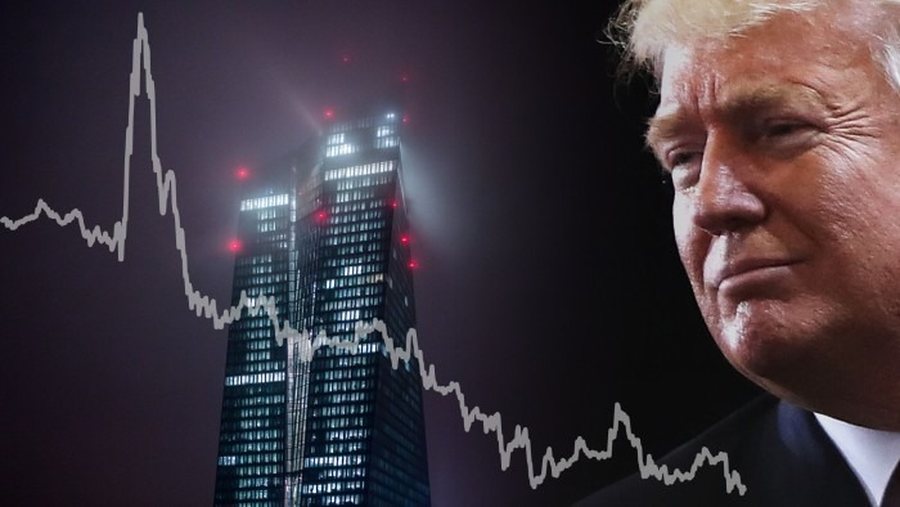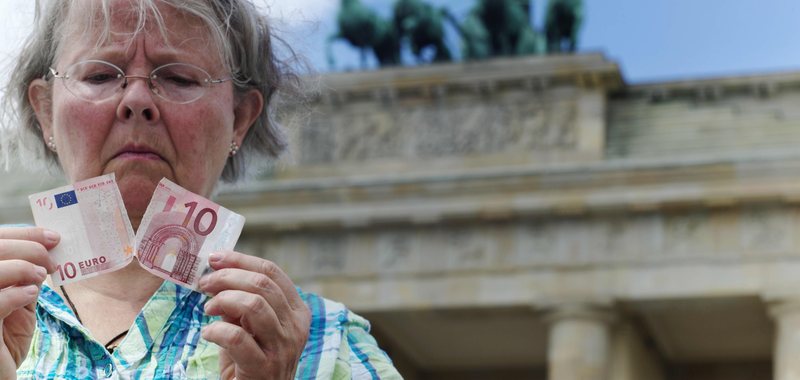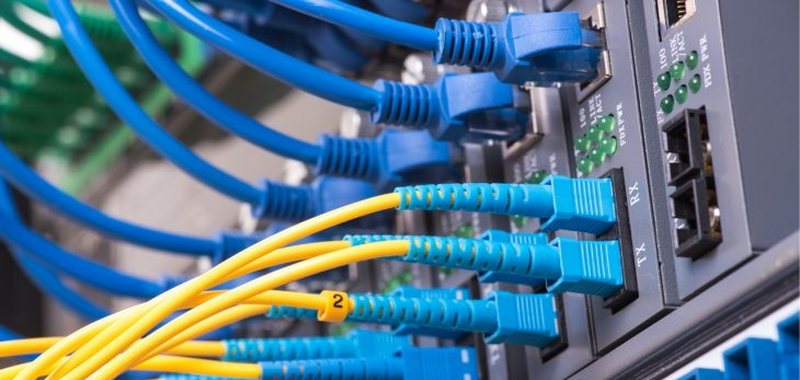How could the European Central Bank react to Trump's trade tariffs?!

The European Central Bank (ECB) is bracing for renewed economic uncertainty as U.S. President Donald Trump prepares to impose a wide range of tariffs. On April 2, the United States is expected to unveil a new round of “reciprocal tariffs,” a key point in President Donald Trump’s renewed push to narrow America’s trade deficit.
While the exact scope and scale remain uncertain, speculation has intensified that the White House could impose tariffs of up to 25% on European goods. These duties would build on existing taxes already applied to cars and parts, which have raised the cost of auto-related exports by up to 50%.
The potential impact is significant. In 2024, the European Union exported goods worth €382 billion to the US, according to the International Trade Centre. Of that, €46.3 billion came from vehicles, including cars, motorbikes and parts. With the United States accounting for around 10% of total EU exports, the bloc is particularly exposed to transatlantic trade frictions.
According to estimates cited by ECB President Christine Lagarde, a 25% tariff imposed by the US could reduce eurozone GDP by 0.5 percentage point and raise inflation by a similar margin in the first year, assuming the EU retaliates in kind. This presents a textbook case of a policy conflict: tariffs act as a supply shock, making imports more expensive, and a demand shock, undermining confidence and disposable income.
Policymakers in Frankfurt find themselves facing an unpleasant paradox: should they support growth by easing monetary policy, or brace against the inflationary blow that such obligations could cause?
For economists like Sven Jari Stehn at Goldman Sachs, the answer depends on the behavior of inflation expectations. “Our estimates suggest that U.S. tariffs would have material negative growth effects with modest (and temporary) effects on inflation, ” he said in a recent note. The standard policy book, Stehn noted, would argue in favor of cutting rates as long as long-term inflation expectations remain anchored.
Goldman Sachs' models show that under such assumptions, the ECB's optimal strategy would be to "watch" inflation rise and thereby lower interest rates. Goldman Sachs continues to expect the ECB to cut interest rates in April, followed by another cut to 2% by June.
The risk of inflation sustainability
But this calculation changes dramatically if the initial burst of inflation feeds into expectations. If businesses and workers begin to anticipate sustained price increases and adjust wage setting accordingly, the ECB may be forced to act to prevent inflation from taking hold.
“In this case, we find that the optimal policy may require a tighter monetary policy,” Stehn said. “The ECB cannot afford to worry about tariff-hit growth in this scenario and must rely on the persistence of inflation.”
However, he also suggested that such second-round effects would have to be “strong enough”—that is, involving a large and broad-based increase in long-term expectations—to justify such a drastic change. For now, underlying wage trends and inflation expectations remain good enough, according to Goldman, for the ECB to consider easing.
EU response to tariffs could shift focus to US services
Ruben Segura-Cayuela, an economist at Bank of America, sees a similar path, albeit at a more cautious pace. “It’s perhaps not absurd to assume that we could see a generic 20% on EU imports, as EU officials seem to think,” he said, referring to recent press reports.
According to his estimates, such a move could put at risk about 0.25 percentage points of eurozone GDP within a year, with more significant losses possible if the EU retaliates. Segura-Cayuela sees retaliation as possible, but warns that the escalation could go beyond goods.
“If the US ‘entry offer’ were particularly aggressive, the risks of escalation extending beyond ‘fair’ tariffs on goods, including EU action on US services, could appear more pronounced ,” he said. Such a move could be strategically attractive to EU policymakers if it protects more sensitive parts of the European economy.
Bank of America maintains a high level of confidence that the ECB’s first rate cut will come in April, followed by a cut to a 1.5% deposit rate by September, although the risks of a delay in December cannot be ruled out. As April 2 approaches, markets will be closely watching how the ECB navigates this complex environment where rates exacerbate macroeconomic challenges.

Insurance companies pay 1.2 billion lek in damages - AMF: About 1.28% less than in 2023. Most of it belongs to motor insurance
Claims paid by insurance companies have decreased. Around 1.2 billion lek is the amount of claims paid by insurance companies in January-February of this......

"VAT will be reduced to 15%" - Sali Berisha presents the "Made in Albania" program in detail
The leader of the Democratic Party, Sali Berisha, has presented in detail the "Made in Albania" program, which aims to promote production in Albania.......

Higher Education, 1 billion lek collected in 2024 - Instat: The number of registrations has decreased by 14% in 4 years
Even with a decrease in the number of students in the auditoriums of Albanian universities, data from the Ministry of Finance shows that during the past......

38 million euros for the purchase of energy - In the period January-March KESH conducts 10 tenders
3 tender procedures are carried out, the bill is estimated at around 11 million euros Around 38 million euros were spent in the first 3 months of the year......

The number of complaints about tenders at the Public Procurement Commission is increasing - How much money will be deposited in the state budget?
Complaints filed by Economic Operators against tender procedures with the Public Procurement Commission have been increasing. According to the February......

France, Le Pen found guilty of corruption - Far-right leader sentenced for embezzlement of EU funds
A French court has found far-right leader Marine Le Pen guilty of embezzling EU funds. The soon-to-be-expected sentence could bar her from running for......

Germany is losing over 10,000 workers per month - Industry plans to cut jobs by 44%
Unemployment in Germany is rising, and especially in industry, many companies are planning to cut jobs. New jobs are being created mainly in the service......

"Unlimited" Internet in 2024 - AKEP: Albanians consumed more GB, but fewer minutes and SMS
During 2024, Albanians consumed more internet, but fewer minutes and SMS messages. The internet is increasingly being used for communication, but also for......





















